Interference hunting for critical infrastructure
Gated mode measurements in private 5G networks

Gated mode measurements in private 5G networks
Your task
At critical infrastructure sites, reliable availability of the required frequency spectrum is paramount. Any radiocommunications failure can pose a major safety risk, which is why fast and effective detection, analysis and location of interfering emissions at critical infrastructure sites is crucial. In the private 5G networks used at many critical infrastructure locations, interference hunting can be extremely challenging. Rohde & Schwarz spectrum monitoring systems protect these facilities.
In time division duplex (TDD) networks, the downlink (DL) and uplink (UL) use the same frequency band in different timeslots. Private TDD networks do not follow standardization requirements for synchronization signal block (SSB) and can be configurated to specific needs. Because they are public networks, they tend to have more uplink traffic.
When viewing such TDD signals on a conventional spectrum display, it is impossible to differentiate between uplink and downlink or distinguish any other unwanted signals present in the same spectrum. In public networks, the standardized UL timeslot can be used for gated measurements and interference hunting, as described in the application card “Interference hunting in TDD networks” (PD 3608.3632.92). This is not suitable for private 5G TDD networks, however, which makes interference hunting in private 5G TDD networks nearly impossible without manually shutting down the network.

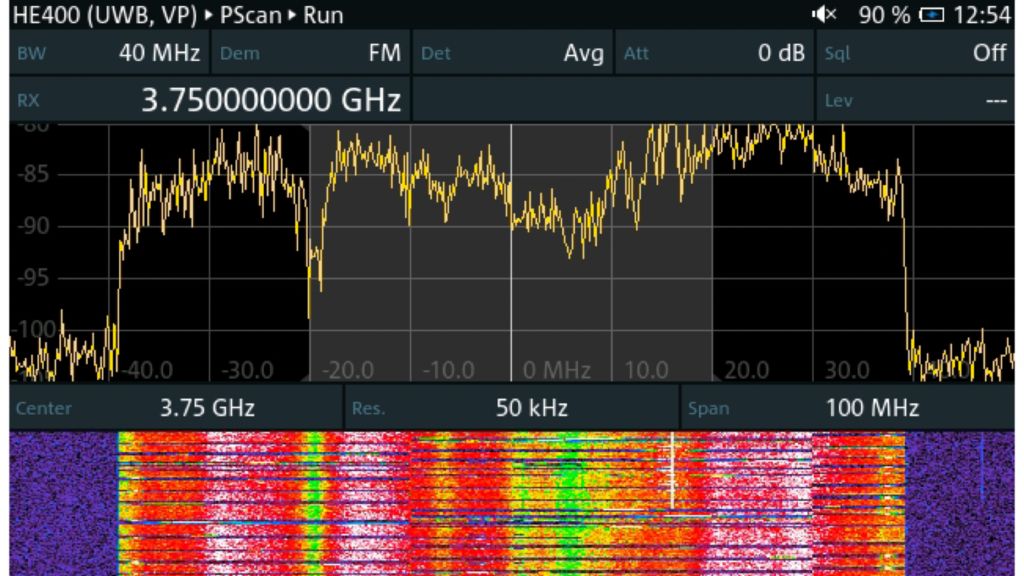
100 MHz spectrum and waterfall display of 5G signals with a temporary interferer at 3.75 GHz
Rohde & Schwarz solution
The R&S®PR200 portable monitoring receiver offers gated spectrum operation. Other well-known applications like homing can be used in combination with the gated spectrum.
In the gated spectrum, the receiver can be triggered to display spectrum only during a specified timeslot – e.g. the 70 μs guard interval between UL and DL in 5G TDD. This makes it easier to see interferers occupying the same frequency as the desired signal, enabling interference hunting in private networks.
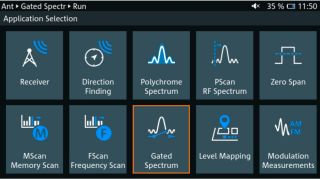
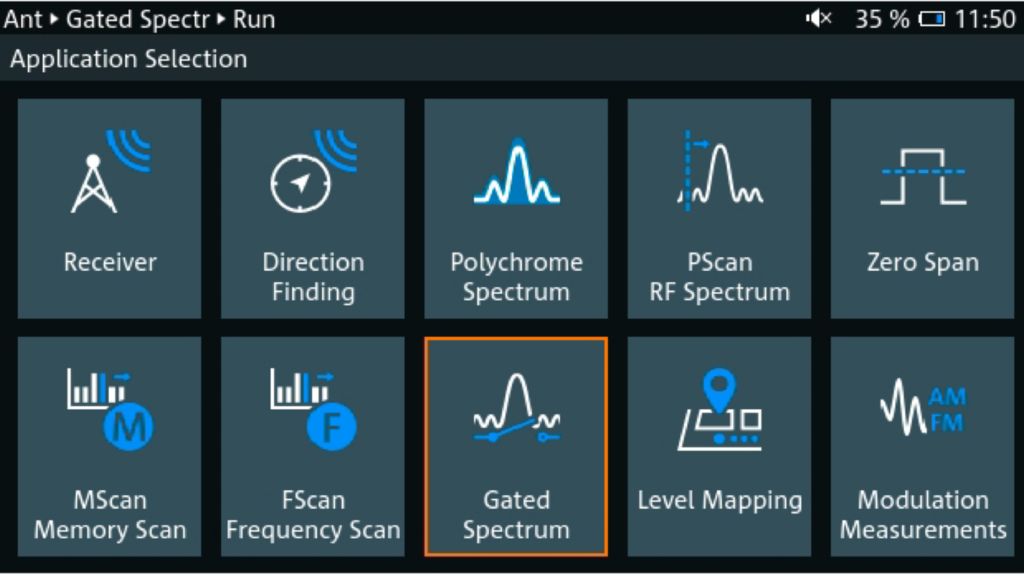
Gated spectrum can be activated from the app menu
The gated spectrum function requires the R&S®CS-ZS time domain measurement option in the R&S®PR200. This function can be selected in the app menu and enables the user to set the recurring gate period, as well as the length and position of the gate. Via the app configurations, the persistent gated mode can be activated to conduct measurements in other functions on the R&S®PR200, such as level mapping (R&S®CS-MAP option) or panorama scan (R&S®CS-PS option).
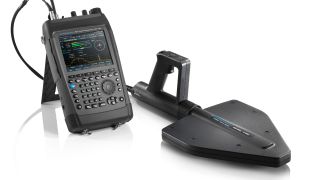
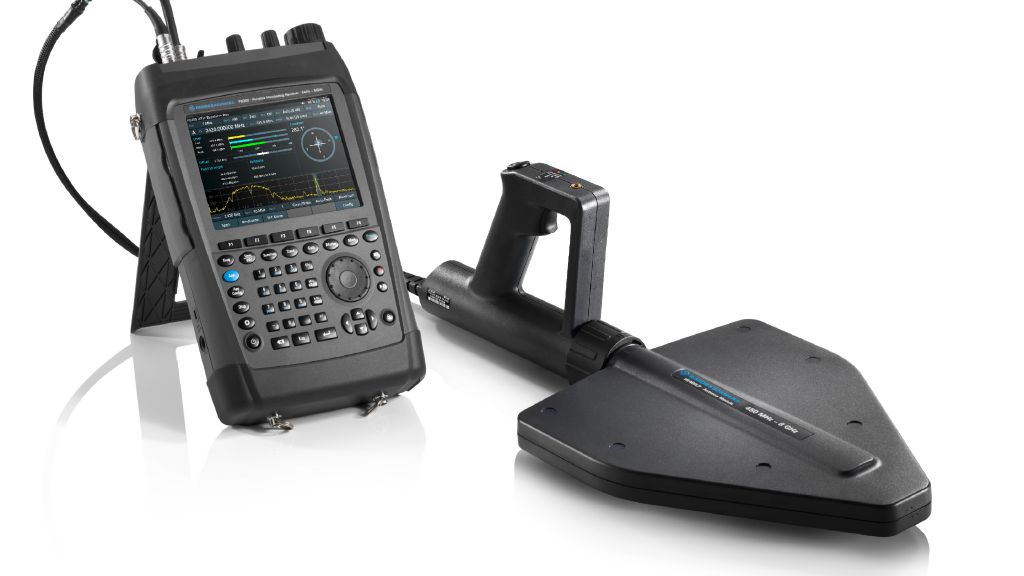
Typical configuration for interference hunting consisting of the R&S®PR200 portable monitoring receiver and the R&S®HE400UWB antenna module
1. Identify the bandwidth of the private network frequencies using the panorama scan (PScan) app with its scan speed
2. Start the gated spectrum app to display the time domain of the frequency range of interest. Use the trace mode (max. hold) with the highest possible periodic period (for 5G, 40 ms) to identify the period of a guard interval (swipe the 40 MHz real-time bandwidth if necessary)
3. Set the gate period either to one radio frame (10 ms) or a periodic portion of the frame (e.g. 2.5 ms). Shorten the gate length and position the gate delay to fit into the guard interval
4. Activate the persistent gate mode in the app configurations to operate other R&S®PR200 apps in the gated mode
5. Use the PScan app to search the whole frequency range of the 5G TDD (e.g. 200 MHz) network for an interferer


Interference hunting with the R&S®HE400UWB antenna module
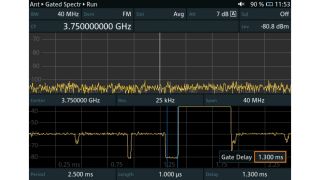
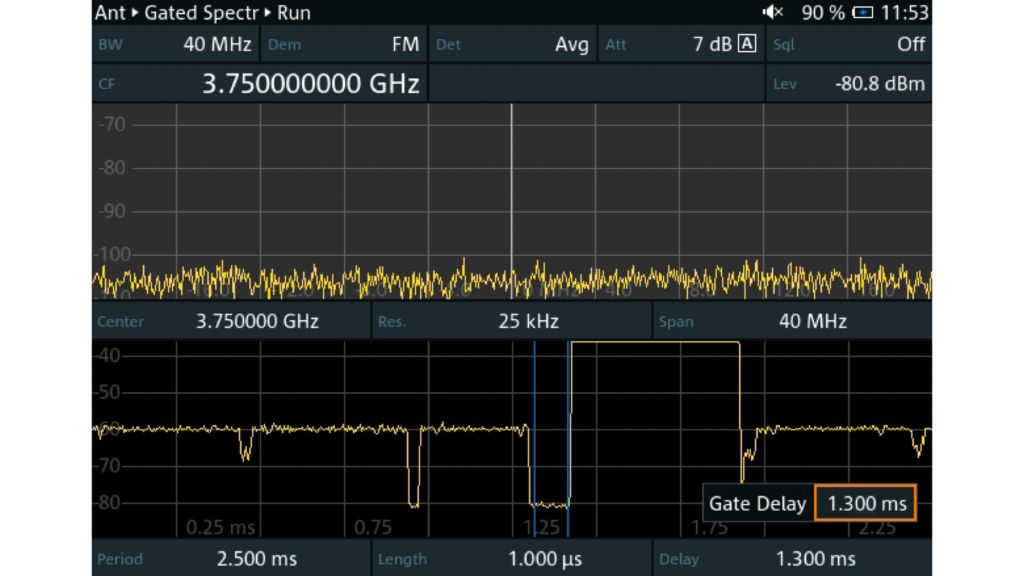
Gate period within the guard interval, allowing the persistent gate mode to operate other R&S®PR200 apps